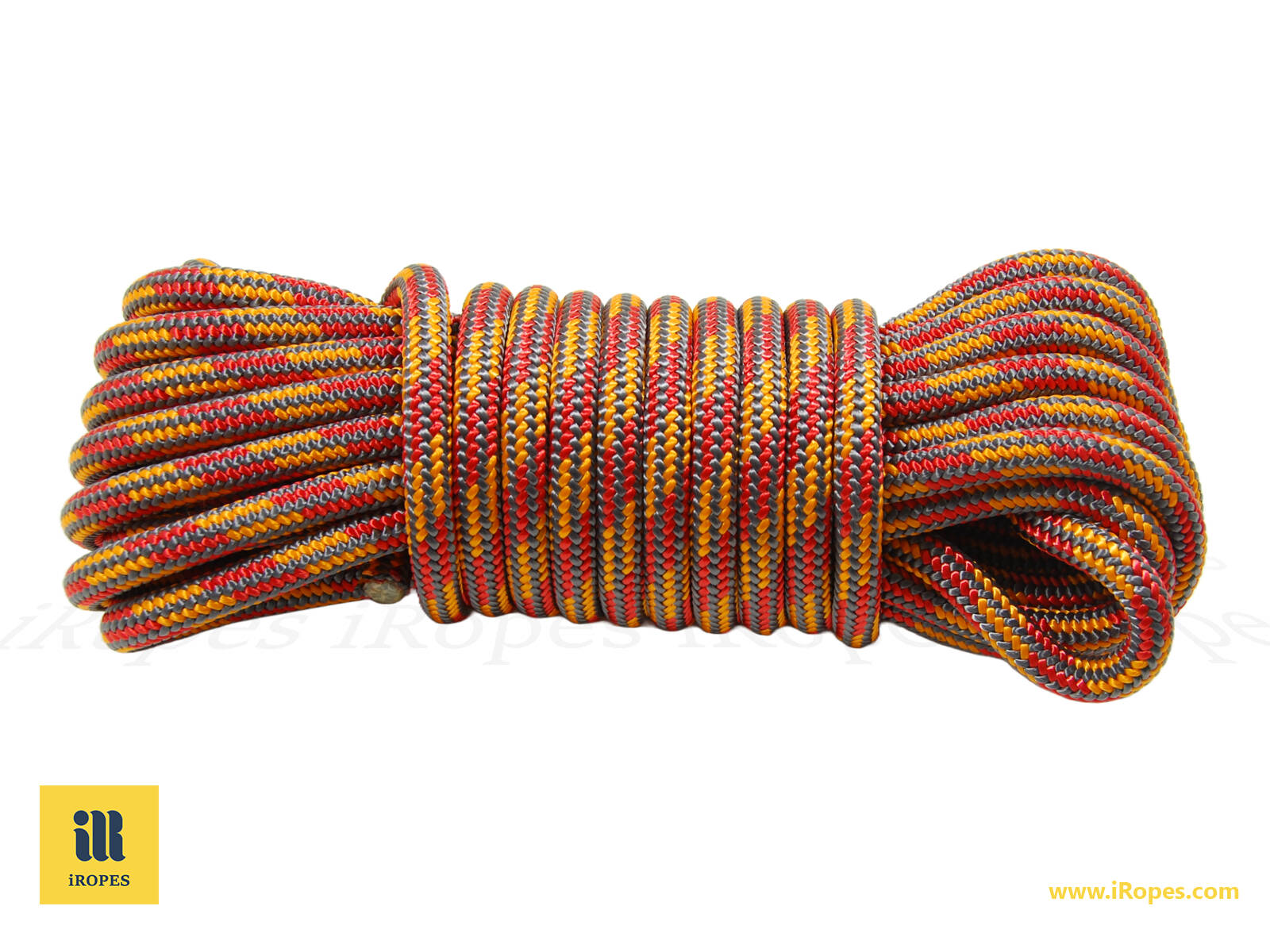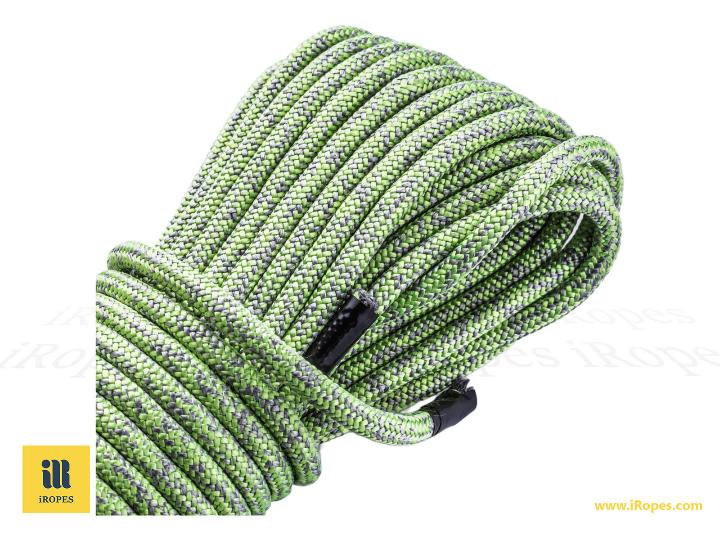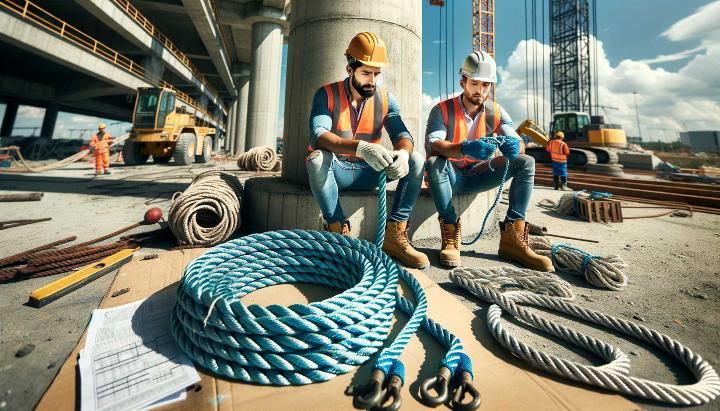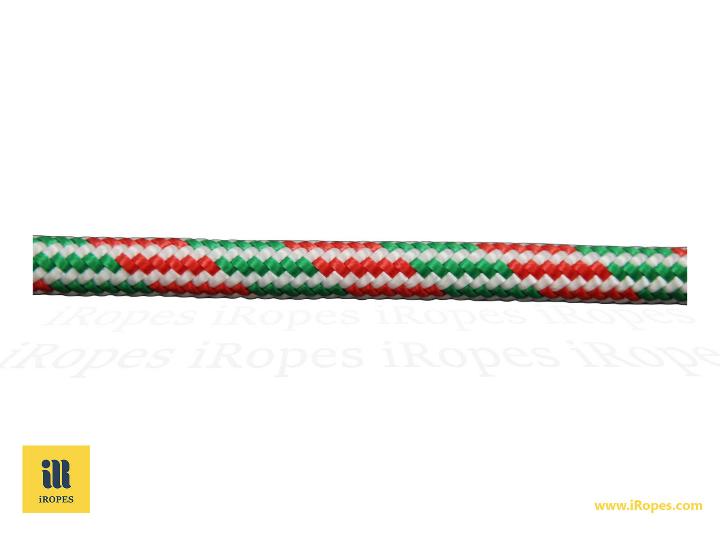Have you ever wondered why some ropes feel just right in your hands, while others leave you struggling? The secret lies in the intricate world of commercial rope manufacturing, where innovation meets tradition. Today, we're diving into the fascinating realm of braided poly rope, a game-changer that's revolutionising industries from sailing to construction.
Imagine a rope that combines the strength of modern synthetics with the comfortable feel of traditional materials. That's exactly what you get with braided poly rope, particularly the polyester variety that mimics the beloved cotton polyester rope so prized in sailing circles. But the benefits don't stop there.
In this post, we'll unlock the myriad advantages of commercial braided poly rope, exploring its unparalleled versatility, durability, and customisation options. Whether you're a seasoned professional or a curious DIY enthusiast, you're about to discover why this remarkable rope is becoming the go-to choice for countless applications. So, coil up and get ready to learn how the right rope can make all the difference in your next project!
This line is easy to splice constructed with high performance UHMWPE fibers, ideally suit for all applications involving high breaking loads, low stretch, minimal creep and excellent UV resistance.
MATERIAL: Uhmwpe-polyester
CONSTRUCT: 12 /24 x 1
ELONGATION: 3%
Understanding Commercial Rope: Types, Materials, and Uses
When it comes to commercial applications, choosing the right rope can make all the difference between success and failure. As someone who's spent years working with various rope types, I've seen firsthand how crucial this decision can be. Let's dive into the world of commercial rope and unravel its mysteries together.
Types of Commercial Rope Construction
Commercial ropes come in several constructions, each with its own set of strengths and weaknesses. The main types you'll encounter are:
- Twisted ropes: These classic ropes are created by twisting yarn fibres into strands. They're like the trusty old ute of the rope world - reliable and versatile.
- Braided ropes: Including solid braid and hollow braid varieties, these ropes offer a smooth surface and excellent handling. Think of them as the sporty hatchback - sleek and efficient.
- Wire ropes: The heavy-duty trucks of the rope world, wire ropes are used for applications requiring immense strength and durability.
Each construction type has its place, and choosing the right one depends on your specific needs. For instance, I once saw a construction project come to a grinding halt because they used a twisted rope where a braided one would have been more suitable. It's a mistake you don't want to make!
Materials Used in Commercial Rope Manufacturing
The materials used in rope-making play a crucial role in determining its properties. Let's break them down:
Natural vs. Synthetic
From traditional fibres to modern synthetics, each material has unique characteristics.
Natural materials like cotton, flax, jute, manila, and sisal have been used for centuries. They offer a classic feel and are biodegradable, but they're generally not as strong or durable as synthetic options.
Synthetic materials such as polyester, nylon, and polypropylene have revolutionised the rope industry. They typically offer superior strength, durability, and resistance to environmental factors. In my experience, polyester ropes, in particular, have a fantastic feel that's quite similar to cotton polyester ropes - a quality that's highly valued in sailing applications.
Remember, the choice between natural and synthetic isn't always straightforward. I've seen eco-conscious projects opt for natural fibres despite their lower strength, while others require the unmatched performance of synthetics. It all comes down to your specific needs.
Applications and Uses of Commercial Rope
Commercial ropes find their way into countless industries and applications. From construction and marine use to sports and decorative purposes, the versatility of rope is truly astounding. Here are a few examples:
- Construction: Used for lifting, securing, and scaffolding.
- Marine: Essential for mooring, rigging, and general boat handling.
- Agriculture: Used in various farm applications, from baling to animal handling.
- Sports and Recreation: Climbing ropes, gym ropes, and playground equipment.
The key to selecting the right rope lies in understanding the specific demands of your application. Consider factors like required strength, exposure to elements, and handling characteristics. And don't forget about safety standards - always ensure your chosen rope meets or exceeds the relevant regulations for your industry.
So, next time you're faced with a rope selection decision, take a moment to consider these factors. Your project's success might just hang by that thread - or should I say, rope!
Advantages of Braided Poly Rope
When it comes to choosing the right rope for commercial applications, braided poly rope stands out as a versatile powerhouse. Having worked with various rope types over the years, I can confidently say that braided poly rope offers a unique combination of strength, durability, and handling ease that's hard to beat.
Strength and Durability of Braided Poly Rope
One of the most striking features of braided poly rope is its impressive strength-to-weight ratio. Compared to traditional twisted ropes, braided poly rope offers superior tensile strength, making it an ideal choice for heavy-duty applications. But don't just take my word for it - let's look at some numbers:
- Breaking strength: Depending on the diameter, braided poly ropes can have breaking strengths ranging from 1,000 to over 30,000 pounds.
- UV resistance: Polyester braided ropes retain up to 95% of their strength after prolonged UV exposure, far outperforming many natural fibre ropes.
- Low stretch: With an elongation rate of only 2-3% at 20% of breaking strength, these ropes maintain their shape under load.
I once witnessed a construction project where a standard twisted rope snapped under heavy load, causing a dangerous situation. The team switched to a braided poly rope of the same diameter, and it handled the job with ease - a testament to its superior strength and reliability.

Applications and Versatility of Braided Poly Rope
The versatility of braided poly rope is truly impressive. Its combination of strength, weather resistance, and handling characteristics makes it suitable for a wide range of applications:
- Marine industry: Ideal for mooring lines, anchor rodes, and sailboat rigging due to its excellent UV and saltwater resistance.
- Construction: Perfect for lifting and securing heavy loads, with its low stretch properties ensuring precise control.
- Outdoor recreation: Commonly used in camping, hiking, and rock climbing gear due to its lightweight nature and durability.
What's more, braided poly rope is incredibly easy to handle. Its smooth surface resists kinking and tangling, making it a joy to work with even in challenging conditions. I remember struggling with a twisted rope during a windy day at the marina - switching to a braided poly rope made the mooring process so much smoother.
And let's not forget about the feel. While it's a synthetic material, many users, especially in the sailing community, appreciate that polyester braided rope offers a feel similar to cotton polyester rope. It's a small detail, but one that can make a big difference in comfort during long hours of handling. Nylon and braided ropes are often favorably compared due to their versatility.
Have you considered using braided poly rope in your projects? With its impressive strength, durability, and versatility, it might just be the game-changer you've been looking for. Whether you're working on a construction site, outfitting a boat, or planning an outdoor adventure, braided poly rope is worth a closer look.
Versatility of Braided Poly Rope: Applications and Advantages
When it comes to versatility, braided poly rope is truly in a league of its own. As someone who's worked with various rope types across multiple industries, I can confidently say that the adaptability of braided poly rope never ceases to amaze me. Let's dive into the myriad ways this remarkable rope can be put to use.
Marine and Water Sports Uses of Braided Poly Rope
In the marine world, braided poly rope is a game-changer. Its buoyancy and resistance to mildew make it an ideal choice for a wide range of water-based applications. Here are just a few examples:
- Dock lines: The rope's strength and flexibility make it perfect for securing boats of all sizes.
- Water ski tows: Its excellent handling properties ensure smooth and safe towing experiences.
- Anchor lines: The rope's resistance to abrasion and UV rays makes it durable for long-term anchoring.
I remember a time when I was helping a friend rig his new sailboat. We opted for braided poly rope for the halyards and sheets, and the difference in handling compared to the old ropes was night and day. The smooth surface made raising and trimming the sails a breeze, even in choppy conditions.

Industrial and Outdoor Applications for Braided Poly Rope
The versatility of braided poly rope extends well beyond the water. Its impressive strength-to-weight ratio and flexibility make it a go-to choice for various industrial and outdoor uses:
- Landscaping: From tree support to erosion control, braided poly rope is a landscaper's best friend.
- Construction: Its load-bearing capacity makes it ideal for securing scaffolding or hoisting materials.
- Crowd control: The rope's durability and visibility make it perfect for creating temporary barriers.
One of the most creative uses I've seen was in a DIY treehouse project. The builder used braided poly rope not just for support, but also to create a unique rope ladder and swing. The rope's weather resistance ensured the treehouse remained safe and functional for years.
Have you ever considered using braided poly rope for your projects? Its versatility might surprise you. Whether you're a professional in need of reliable gear or a weekend warrior tackling a DIY project, braided poly rope could be the solution you've been looking for.
Customisation Options
From colour and diameter to length, braided poly rope can be tailored to your specific needs.
Remember, the key to unlocking the full potential of braided poly rope lies in understanding its properties and choosing the right specifications for your application. So next time you're faced with a challenging task, consider the versatile braided poly rope - it might just be the solution you never knew you needed.
Maintaining and Prolonging the Life of Cotton Polyester Rope
As a long-time sailor and outdoor enthusiast, I've learned that proper care can make a world of difference in the lifespan of your cotton polyester rope. These versatile ropes, known for their soft feel and durability, require a bit of TLC to keep them in top shape. Let's dive into some practical tips to help you extend the life of your cotton polyester rope and get the most out of your investment.
Proper Cleaning and Storage Techniques
Keeping your cotton polyester rope clean and properly stored is crucial for maintaining its strength and flexibility. Here's a step-by-step guide to cleaning your rope:
- Rinse thoroughly: After each use, especially in saltwater environments, give your rope a good rinse with fresh water to remove salt, dirt, and debris.
- Gentle cleaning: For tougher grime, use a mild soap and lukewarm water. Avoid harsh detergents that can damage the fibres.
- Air dry completely: Never store your rope when it's damp. Hang it in a well-ventilated area, away from direct sunlight, to air dry completely.
- Proper coiling: Once dry, coil your rope loosely to prevent kinks and tangles. The figure-eight coil is a popular method among sailors.
When it comes to storage, remember this golden rule: keep your cotton polyester rope in a cool, dry place away from direct sunlight. UV rays can weaken the fibres over time, reducing the rope's strength and lifespan.
Pro tip: Use a breathable rope bag for storage. It protects your rope from dust and UV rays while allowing air circulation to prevent mould growth.
Protecting Against Environmental Factors
Environmental factors can significantly impact the longevity of your cotton polyester rope. Here are some key points to keep in mind:
- UV protection: While cotton polyester ropes have some inherent UV resistance, prolonged exposure can still cause damage. Consider using a UV-protective spray designed for ropes if you're using them in sunny conditions.
- Chemical exposure: Avoid contact with harsh chemicals, oils, and solvents. These can weaken the fibres and compromise the rope's integrity.
- Abrasion prevention: Use chafe guards or protective sleeves in areas where the rope may rub against rough surfaces.
Compared to pure synthetic ropes, cotton polyester blends offer a good balance of durability and a pleasant feel. However, they may require more frequent inspections and care than their all-synthetic counterparts.
Remember, regular inspection is key to prolonging your rope's life. Look for signs of wear such as fraying, discolouration, or unusual stiffness. If you notice any of these, it might be time to retire the rope or cut out the damaged section if it's localised. If you're interested in exploring various rope types, consider understanding rope types and strengths.
By following these maintenance tips, you can ensure your cotton polyester rope remains a reliable companion for your sailing adventures or outdoor projects for years to come. Have you got any rope care tips of your own? Share them in the comments below!
Choosing the right commercial rope is vital for the success of various applications, and braided poly rope shines as an outstanding choice due to its unmatched strength, durability, and easy handling. Resistant to UV, abrasion, and chemicals, this lightweight option suits both indoor and outdoor use across industries from marine to construction. Remarkably, polyester braided ropes emulate the comfortable feel of cotton polyester rope, making them a favourite in sailing. Moreover, their customisation potential in colour and dimension enhances their utility in diverse settings. By understanding proper maintenance, users can enjoy the prolonged life of cotton polyester ropes, which maintain a tactile appeal similar to polyester polyester ropes used in sails.
Discover More About Our Customisable Rope Solutions
Interested in exploring the versatility of braided poly rope for your projects? Kindly fill out the form above to connect with us and learn more about how our customised commercial rope solutions can work for you.
```